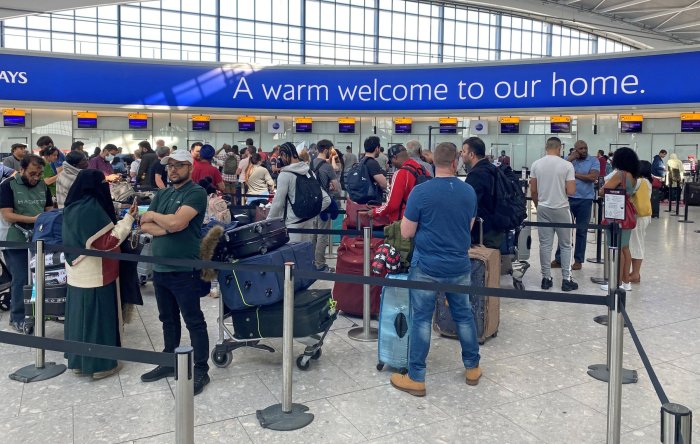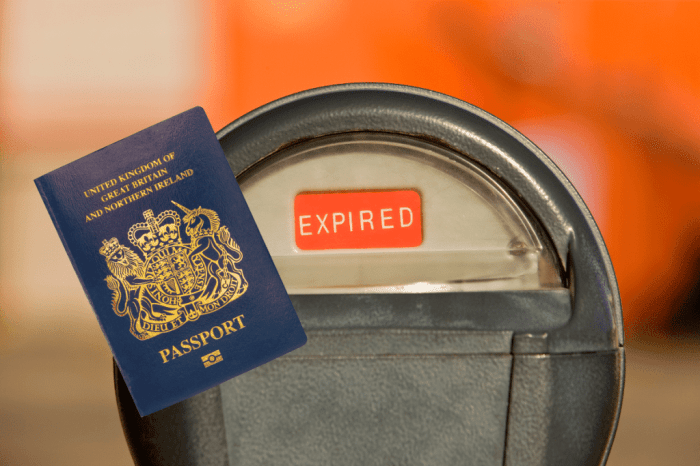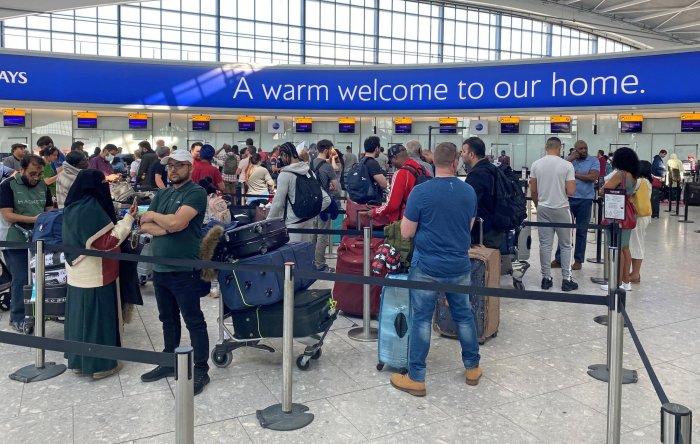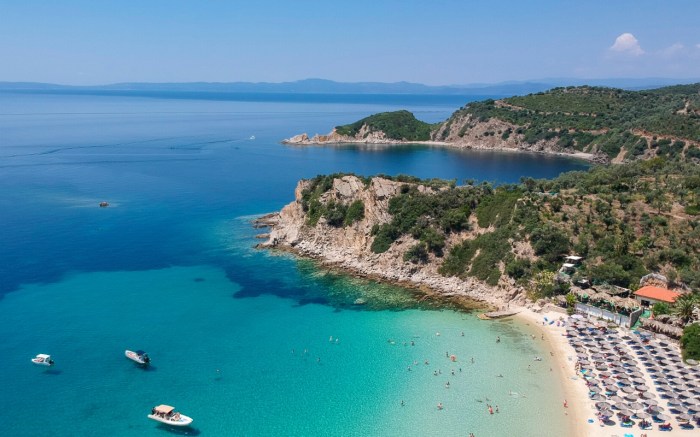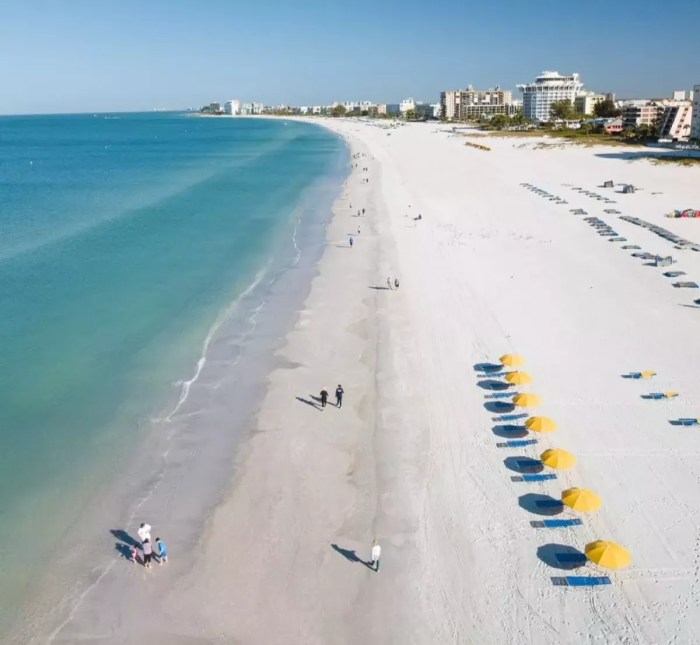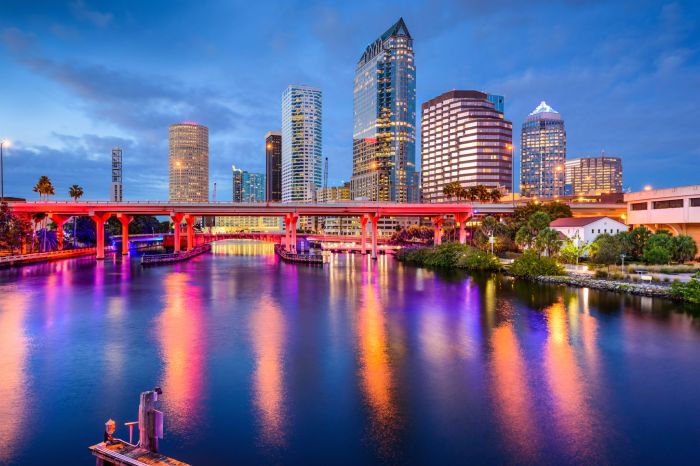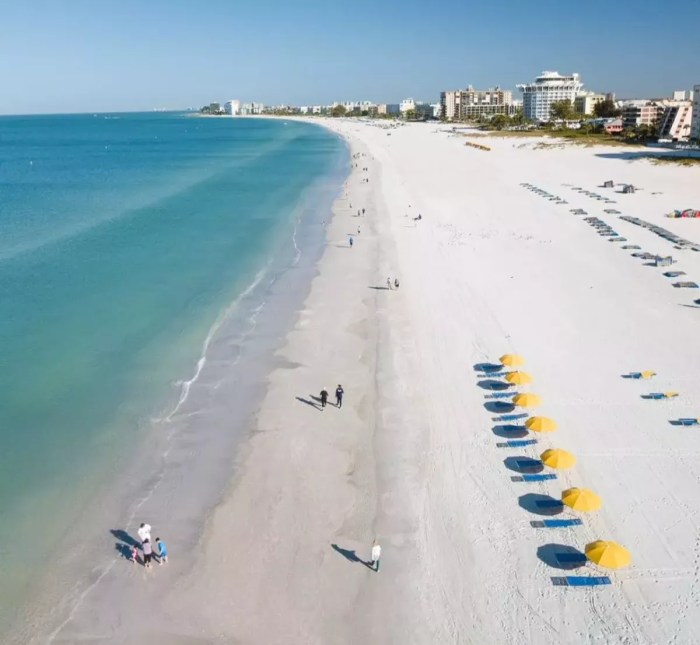Getting around Buenos Aires is a vibrant adventure, whether you’re a seasoned traveler or a first-time visitor. From bustling public transport to charming neighborhood walks, this guide explores every facet of navigating this captivating city. Discover the best ways to experience the vibrant culture and iconic landmarks, from the historic Plaza de Mayo to the bohemian charm of La Boca.
This comprehensive guide provides a detailed look at Buenos Aires’ diverse transportation options, including public buses, subways, taxis, and ride-sharing services. It also considers the accessibility of each mode, safety tips, and budget-friendly options. We’ll also explore walking and cycling as alternative ways to experience the city, and provide insights on navigating tourist hotspots. Whether you’re planning a multi-day trip or a quick weekend getaway, this guide ensures you’ll get the most out of your Buenos Aires adventure.
Transportation Methods in Buenos Aires
Buenos Aires, a vibrant city with a rich cultural tapestry, boasts a diverse range of transportation options catering to various needs and preferences. Navigating the city effectively requires understanding the strengths and weaknesses of each method, particularly during the bustling rush hours. This exploration delves into the intricacies of getting around, from the efficiency of the subway system to the convenience of ride-sharing services.Exploring Buenos Aires’ transportation landscape provides a glimpse into the city’s dynamic energy and the challenges of balancing efficiency with environmental considerations.
Primary Transportation Options
The city offers a multitude of transportation options, each with its own set of advantages and disadvantages. Understanding these nuances is key to choosing the most suitable method for a specific journey.
- Buses: The ubiquitous bus system serves as the backbone of public transport in Buenos Aires. Their extensive network covers virtually every corner of the city, making them incredibly accessible. However, reliability and punctuality can vary, especially during peak hours. Frequent delays and overcrowding are common complaints, but the sheer volume of routes makes buses an economical and readily available option for many.
- Subways (Subte): The Buenos Aires subway system, or “Subte,” is a reliable and efficient mode of transport, offering a relatively fast and predictable journey through the city. Its network connects major neighborhoods and business districts, significantly reducing travel time compared to other options. During peak hours, the subway is often crowded, but the structured system and designated lines ensure relatively smooth travel.
The Subte’s extensive coverage makes it a popular choice for many.
- Taxis: Taxis remain a popular choice for those seeking a more direct route or avoiding public transport crowds. While readily available, taxi fares can be unpredictable and vary depending on the route. Negotiating fares beforehand is often recommended to avoid misunderstandings. Their accessibility is limited to those with access to roadways, which may be a factor during extreme weather conditions.
- Ride-sharing Services: Ride-sharing apps like Uber and Cabify are increasingly popular, providing a convenient alternative to taxis. These services offer relatively quick and reliable travel, often at a competitive price. However, the availability of these services can fluctuate, particularly in less populated areas.
Reliability and Frequency
The frequency and reliability of transportation methods are crucial factors for navigating the city efficiently, especially during peak hours. Understanding these aspects can help travelers plan their journeys accordingly.
- Peak Hours: Rush hour traffic in Buenos Aires, like many urban centers, significantly impacts transportation reliability. Buses and subways experience considerable delays and overcrowding, particularly during the morning and evening commutes. This is something travelers should be aware of, and consider alternative routes or departure times if possible.
- Bus Reliability: Bus services often experience delays due to traffic congestion, mechanical issues, or other unforeseen circumstances. This is a key consideration for travelers who rely on buses as their primary mode of transport.
- Subway Frequency: The frequency of subway trains varies depending on the line and time of day. During peak hours, trains run more frequently to accommodate the large volume of passengers. Off-peak hours, the frequency might be less frequent, but still generally manageable.
Transportation Options Comparison
The table below provides a comparative overview of various transportation options in Buenos Aires.
| Mode of Transport | Typical Cost | Estimated Travel Time | Accessibility Features |
|---|---|---|---|
| Buses | Affordable (USD 1-3 per trip) | Variable (depending on route and traffic) | Extensive network coverage, relatively accessible for all. |
| Subways | Moderate (USD 2-4 per trip) | Faster than buses, typically | Accessible stations, good for navigating central areas. |
| Taxis | Variable (negotiate beforehand) | Direct route, but potentially longer depending on traffic | More direct route, but may be more expensive. |
| Ride-sharing | Competitive (USD 3-5 per trip) | Relatively fast | Convenient for pre-booked trips, but availability can vary. |
Environmental Impact
The environmental impact of transportation choices is a significant consideration in urban planning. The city has made efforts to encourage sustainable options, but the impact of each mode varies.
- Buses: Buses contribute to air pollution, but the extensive network can facilitate less reliance on personal vehicles.
- Subways: Subways have a lower carbon footprint compared to cars, buses, or taxis.
- Taxis: Taxis, depending on fuel type, contribute to air pollution.
- Ride-sharing: Ride-sharing services offer an alternative to personal vehicles, but their environmental impact depends on factors like the efficiency of the vehicles and driver routes.
Public Transportation System
Buenos Aires’ public transportation system is a complex network of buses and subways. Understanding its structure and routes is key to efficient navigation.
- Coverage: The system covers nearly all parts of the city, with extensive bus routes reaching every neighborhood.
- Routes: Detailed maps and schedules are available online, providing insight into the various routes and connections within the city. Understanding these routes will help with trip planning and time management.
Walking and Cycling in Buenos Aires

Buenos Aires, a vibrant city of tango, architecture, and delicious food, offers a unique charm that can be experienced in many ways. While public transportation is extensive, exploring the city on foot or by bike can provide a deeper connection with its character. This section delves into the feasibility and advantages of these methods of transport, highlighting suitable areas and navigating the city’s pedestrian infrastructure.Walking and cycling are effective ways to discover Buenos Aires’ hidden gems and enjoy its urban atmosphere.
They allow for a more intimate connection with the city’s unique neighborhoods, a crucial component for experiencing the true essence of Buenos Aires.
Feasibility of Walking
Buenos Aires is a walkable city, particularly in certain neighborhoods. The historic center, known for its cobblestone streets and plazas, is ideal for pedestrian exploration. Other suitable areas include Palermo, known for its parks and elegant streets, and San Telmo, with its charming atmosphere and antique shops. However, the sprawling nature of some neighborhoods, especially those with large avenues and limited pedestrian infrastructure, may make walking less practical for longer distances.
Pros and Cons of Walking
Walking offers numerous advantages. It’s a free and eco-friendly way to experience the city, allowing for a leisurely pace and the opportunity to soak in the sights and sounds. You can easily stop and explore a side street, visit a café, or linger in a plaza. However, walking in Buenos Aires can be challenging during peak hours, particularly in congested areas.
The city’s terrain can also be uneven, making it less suitable for individuals with mobility issues. Furthermore, navigating the city’s sometimes complex street layouts and pedestrian crossings can take time and effort.
Comparison of Walking and Cycling
Cycling provides a more active and faster way to traverse the city compared to walking. It offers a unique perspective, allowing for a better appreciation of the city’s layout and green spaces. However, the availability of dedicated bike lanes and the safety of cycling in certain areas are factors to consider. Walking offers greater flexibility in exploring side streets and spontaneous discoveries, while cycling offers a faster and more dynamic experience.
Navigating Pedestrian Infrastructure
Buenos Aires’ pedestrian infrastructure varies. Sidewalks are generally present but can be narrow in some areas. Crosswalks are common, but their visibility and adherence to traffic rules can vary. Observing traffic patterns, using pedestrian crossings, and being aware of your surroundings are essential for safe navigation. It is advisable to check for pedestrian signals and obey the traffic laws.
Walking Tour: Palermo Soho
This walking tour focuses on the Palermo Soho neighborhood, known for its trendy boutiques, art galleries, and vibrant atmosphere.
| Stop | Attraction | Description |
|---|---|---|
| 1 | Plaza Serrano | A central meeting point, surrounded by cafes and shops. |
| 2 | Calle Defensa | Explore the trendy shops and art galleries along this street. |
| 3 | Museo Nacional de Bellas Artes | A must-see museum showcasing Argentina’s art history. |
| 4 | Cafes and restaurants | Enjoy the diverse culinary scene. |
Bicycle Lanes and Rentals, Getting around buenos aires
Buenos Aires has a growing network of bicycle lanes, predominantly located in the more developed neighborhoods. However, their quality and consistency can vary across the city. Bike rentals are available from various locations, including bike-sharing programs and independent shops. The availability of bike lanes and the overall cycling infrastructure in Buenos Aires needs continuous improvement to encourage more widespread use of this mode of transportation.
Consider the specific routes and the condition of the lanes before choosing to cycle in certain areas.
Navigating Tourist Areas
Buenos Aires’ vibrant tourist destinations, from the historic Plaza de Mayo to the artistic La Boca, draw large crowds. Understanding the best ways to navigate these areas is key to a smooth and enjoyable trip. Knowing how to avoid common pitfalls and leverage efficient transportation options will make your experience more fulfilling.Navigating the bustling tourist areas of Buenos Aires requires a proactive approach.
Knowing your options for getting around and anticipating potential challenges can greatly enhance your visit. This section details effective strategies for navigating popular spots, including Plaza de Mayo, Recoleta Cemetery, and La Boca. It also highlights strategies for managing crowds and choosing convenient transportation methods, along with recognizing and avoiding potential tourist traps.
Strategies for Navigating Crowds
Effective crowd management is crucial when exploring Buenos Aires’ popular tourist destinations. Anticipating congestion and choosing appropriate transportation methods are key to minimizing delays and maximizing your enjoyment. Plan your route in advance and be aware of peak times, which often coincide with lunch breaks and the start of the evening.
Transportation Options for Tourist Destinations
Choosing the right transportation method for each destination is crucial for a smooth experience. The city’s diverse options, from walking to public transport, offer various advantages and disadvantages depending on the location and your personal preferences.
| Destination | Walking | Public Transport | Taxi/Ride-sharing |
|---|---|---|---|
| Plaza de Mayo | Excellent for exploring the immediate area; manageable distances | Buses and subways provide efficient access from other parts of the city. | Convenient for quick travel between destinations; consider potential traffic congestion. |
| Recoleta Cemetery | A good option for leisurely exploration; the cemetery is relatively compact. | Subway and buses offer convenient access from various parts of the city. | A taxi is suitable for reaching the cemetery quickly, but traffic can be a factor. |
| La Boca | Walking is great for experiencing the neighborhood’s charm; a good way to appreciate the atmosphere. | Buses are accessible and provide coverage of the area; be aware of potential crowds at peak hours. | Taxis can be readily available but traffic can be unpredictable. |
Avoiding Tourist Traps
Buenos Aires, while brimming with attractions, also has its share of tourist traps. Being aware of these potential pitfalls can help you avoid unpleasant surprises. These often include overpriced souvenirs, poorly-maintained attractions, and misleading information. Always research your destination beforehand to avoid these common issues.
Specific Recommendations for Different Zones
To avoid traffic congestion, particularly during peak hours, consider utilizing public transportation. The metro system, combined with the extensive bus network, offers a reliable and efficient way to traverse the city. Prioritize public transport in central areas, and utilize walking for shorter distances within the tourist zones.
Planning a Trip and Booking Transportation
Buenos Aires offers a vibrant array of transportation options, from the iconic metro system to the bustling colectivo network. Efficiently navigating this system requires careful planning, especially for multi-day trips. Understanding the various ticket purchasing methods and real-time information resources is key to a smooth journey.This section will guide you through the process of planning your transportation needs, from researching options to securing tickets and tours.
We’ll cover online and offline methods, payment options, and how to build a multi-day itinerary incorporating transportation considerations.
Real-Time Transportation Information
Accessing real-time information on schedules and routes is crucial for efficient travel. Numerous websites and apps provide this data.
Getting around Buenos Aires is surprisingly easy, with a fantastic public transport system. However, if you’re planning a trip to the Musée Atelier Audemars Piguet, a stunning showcase of horological artistry , you might find a taxi or rideshare more convenient for getting there. Still, for exploring the city’s vibrant neighborhoods, the metro and buses are your best bets!
- Subte (Metro) Official Website: The official website for the Buenos Aires metro system (subte) provides up-to-date schedules, station maps, and real-time information on service disruptions.
- Colectivo (Bus) Apps: Several apps, like those developed by individual companies, provide real-time bus locations and estimated arrival times. These apps can be invaluable for navigating the expansive colectivo network.
- Google Maps: Google Maps offers detailed information about public transportation routes, including bus and metro lines, in Buenos Aires. It provides estimated travel times and real-time updates.
- Viajes BA: This website offers information about various transportation options, including schedules and ticket purchasing. It’s a valuable resource for researching and planning your travel.
Purchasing Transportation Tickets
Understanding ticket purchasing methods is essential for seamless travel.
- Online Purchasing: Many transportation services, including subte, offer online ticket purchasing. This is convenient for advance bookings and often offers discounted fares. This allows you to avoid queues and potentially save time.
- On-site Purchasing: Ticket vending machines are available at subte stations and some bus stops. Purchasing tickets directly from the machines is a quick and easy method, but you need local currency and a familiarity with the vending machine interface.
- Mobile Payment: Many bus and metro services support mobile payment options, allowing you to pay with apps like Mercado Pago or similar platforms. This method is a fast and efficient way to pay.
Payment Methods
Knowing accepted payment methods is vital for smooth transactions.
- Cash: While not as common as other options, some vendors still accept cash. Local currency (Argentine pesos) is generally required for on-site purchases.
- Credit/Debit Cards: Many vendors, especially those offering online purchasing, accept credit and debit cards. It’s always recommended to check the specific acceptance policy for each service.
- Mobile Payment Apps: Apps like Mercado Pago are widely used in Buenos Aires and are increasingly accepted for public transportation purchases. It’s a quick and convenient way to pay.
Planning a Multi-Day Itinerary
Planning a multi-day itinerary requires considering transportation options for each day.
A well-planned itinerary should incorporate the expected travel times between destinations. This ensures that you don’t miss key events or activities.
Consider using a digital calendar to organize your activities and scheduled transportation. Include details like bus routes, metro lines, and estimated travel times.
Resources for Research and Booking
Several resources facilitate advance research and booking.
Booking transportation in advance, especially during peak season, can help secure your travel arrangements.
- Train Tickets: Websites like Trenes Argentinos offer online booking for train tickets, enabling you to plan your train journeys ahead of time. This allows you to book seats or specific classes.
- Tours: Numerous websites and travel agencies offer tours in Buenos Aires. Booking tours in advance, especially for popular attractions, is advisable. Look for options that include transportation as part of the package.
Accessibility and Inclusivity
Buenos Aires strives to be a welcoming city for all visitors, including those with disabilities. This commitment translates into various initiatives and services aimed at ensuring that everyone can comfortably explore the city’s attractions and enjoy its vibrant culture. Understanding the accessibility features available is crucial for a smooth and enjoyable travel experience.Accessible transportation and facilities are vital for people with disabilities to navigate the city with ease.
Getting around Buenos Aires can be a breeze, especially with its extensive metro system. But if you’re looking for a vibrant, hilly city experience, consider exploring San Francisco, CA, a place where cable cars and quirky neighborhoods add a unique charm to travel. San Francisco ca travel often involves navigating these charming inclines and exploring the city’s iconic landmarks.
Ultimately, Buenos Aires’s mix of buses, taxis, and the metro makes it very accessible, though.
Buenos Aires is working to provide options that meet diverse needs, promoting inclusivity and enabling everyone to participate fully in the city’s offerings.
Navigating Buenos Aires is a breeze, with its extensive metro system and readily available taxis. However, for a truly immersive experience, consider hopping on a local bus – it’s a great way to soak up the city’s vibrant atmosphere. Thinking about getting around in a different landscape? Exploring the stunning landscapes of the best Utah national parks is a fantastic alternative.
best utah national parks offer a whole other level of adventure, from towering canyons to majestic mountains. Ultimately, getting around Buenos Aires is best done with a mix of these methods to discover the city’s hidden gems!
Accessibility of Transportation Methods
Buenos Aires’ public transportation system, including the subte (subway) and colectivos (buses), is gradually improving its accessibility features. While not all lines and vehicles are fully accessible, efforts are being made to increase the availability of ramps, elevators, and accessible seating. Information about accessible vehicles is often available on the relevant transportation company websites.
Accessible Taxis and Ride-Sharing Services
Many taxis in Buenos Aires are equipped with ramps or lifts for wheelchair users. It’s a good practice to request a taxi with accessibility features in advance, especially when traveling with mobility aids. Similarly, ride-sharing services, although not always explicitly advertised as accessible, may offer accessible options upon request. Direct communication with the service provider about specific accessibility needs is recommended.
Public Transportation Accessibility
Buenos Aires’ public transportation system, including the subte (subway) and colectivos (buses), is gradually improving its accessibility features. While not all lines and vehicles are fully accessible, efforts are being made to increase the availability of ramps, elevators, and accessible seating. Information about accessible vehicles is often available on the relevant transportation company websites. For example, specific lines or routes may have designated accessible vehicles, and their availability can be verified.
Information Resources for Travelers with Mobility Challenges
Finding information about accessible transportation options can be facilitated by visiting the official websites of the Buenos Aires public transportation system (subte and colectivos). These websites often contain maps and details of accessible stations, routes, and vehicles. Furthermore, various tourism and accessibility organizations offer resources for travelers with disabilities. These organizations can provide insights into the city’s accessible facilities and services.
Accessing Information about Accessible Options
Numerous sources provide information about accessible transportation options in Buenos Aires. The websites of the public transportation companies, such as the subte and colectivos, are excellent starting points. These websites often feature maps, schedules, and details about accessible routes and vehicles. Additionally, tourist information centers and disability organizations can offer valuable insights into the city’s accessible facilities and services.
Travelers can also contact the relevant transportation companies directly for specific inquiries about accessible transportation options.
Safety Considerations

Buenos Aires is a vibrant city brimming with life, but like any bustling metropolis, it’s essential to be aware of potential safety concerns. Understanding the nuances of navigating public spaces and being mindful of your surroundings can significantly enhance your experience. This section Artikels practical tips to ensure a safe and enjoyable trip.
General Safety Tips for Public Transportation
Buenos Aires’ public transportation system, while efficient, requires a certain level of awareness. Maintaining vigilance and being observant are crucial. Keep your valuables close, and avoid displaying expensive items openly. Use well-lit and populated areas whenever possible, especially during late hours. Trust your instincts; if a situation feels uncomfortable, remove yourself from it.
Staying Aware of Your Surroundings and Belongings
Maintaining situational awareness is paramount in any city. Keep a watchful eye on your belongings, particularly in crowded areas like buses, subways, and markets. Avoid placing bags or purses on unattended surfaces or in areas where they might be easily accessible to others. Be mindful of your surroundings and pay attention to those around you, especially in busy areas.
A proactive approach to safeguarding your belongings can prevent potential issues.
Avoiding Scams and Petty Theft
Be cautious of individuals offering unsolicited assistance or making promises that seem too good to be true. Avoid engaging with strangers who try to distract you or pressure you into transactions. Be wary of pickpockets, especially in crowded areas. Use secure pockets and bags to keep valuables hidden from view. Thoroughly check your belongings before leaving crowded places.
Staying Safe When Traveling at Night
Nighttime travel requires extra caution. Avoid walking alone in poorly lit or deserted areas. Utilize well-lit streets and public transportation options. Let someone know your itinerary and expected return time. If you feel threatened, immediately seek assistance from security personnel or a local resident.
Use reputable taxis or ride-sharing services when traveling at night.
Resources for Reporting Safety Concerns or Emergencies
Knowing how to report safety concerns or emergencies is crucial. Familiarize yourself with the local emergency numbers, such as the police and ambulance services. Have the contact information of your hotel or accommodation readily available. Keep important documents, such as your passport and travel insurance information, easily accessible but secure. Report any suspicious activities to local authorities immediately.
| Emergency Contact | Description |
|---|---|
| 911 | General emergencies, including police, fire, and ambulance services. |
| Local Police Department | Specific reporting of crimes or incidents. |
| Hotel/Accommodation | Assistance and information in case of issues. |
Budget Considerations: Getting Around Buenos Aires
Buenos Aires offers a vibrant tapestry of transportation options, each with its own price tag. Understanding the cost spectrum and strategic budgeting can significantly enhance your travel experience, allowing you to maximize your time and enjoy the city’s wonders without financial strain. This section dives into the cost-effectiveness of various methods, strategies for minimizing expenses, and tools for creating a realistic transportation budget for your Buenos Aires adventure.
Cost Estimates for Different Transportation Methods
Buenos Aires provides a diverse range of transportation choices, each with a different price point. Understanding these costs is crucial for effective budgeting. A comprehensive overview helps travelers tailor their transportation choices to fit their budgets.
- Subte (Subway): A single ride on the subte typically costs around ARS 30-50, depending on the distance. A 10-trip ticket can be more economical, often around ARS 150-200, making it a budget-friendly choice for frequent users. A 24-hour pass offers flexibility for exploring different parts of the city.
- Colectivos (Buses): A single colectivo ride generally ranges from ARS 20-40. The cost varies by route and distance. A day pass, if available, can be a worthwhile investment for frequent travelers, saving money compared to individual tickets.
- Trenes (Trains): Train fares depend on the distance traveled, costing between ARS 30 and 60 per trip. Longer routes or specific lines may have higher costs. Consider a multi-ride ticket for cost savings if you anticipate using the train system frequently.
- Taxis and Rideshares: Taxis and ride-hailing services like Uber and Cabify offer convenience but come with higher prices. Expect fares to be around ARS 200-300 for a typical trip, depending on the distance and traffic conditions. Negotiating fares in advance can be helpful for taxis.
- Bicicletas Públicas (Public Bikes): These bike-sharing programs offer a cost-effective and eco-friendly way to explore the city. A day pass typically costs around ARS 100-150.
Comparing Cost-Effectiveness of Options
Different transportation methods offer varying levels of cost-effectiveness, contingent on individual travel patterns. Carefully evaluating your travel needs and the price of different options is key. This allows travelers to make informed choices that align with their budgets.
| Transportation Method | Estimated Cost (ARS) | Cost-Effectiveness |
|---|---|---|
| Subte | 30-50 per ride, 150-200 for 10 rides | Highly cost-effective for frequent use |
| Colectivos | 20-40 per ride | Cost-effective for short distances |
| Taxis/Rideshares | 200-300 per trip | Less cost-effective, suitable for longer distances or emergencies |
| Bicicletas Públicas | 100-150 for a day pass | Cost-effective for moderate distances and sightseeing |
Methods for Minimizing Transportation Costs
Travelers can significantly reduce transportation expenses through strategic planning. This can involve using public transportation, purchasing multi-ride tickets, and choosing economical options based on distance.
- Utilize Public Transportation: The subte and colectivos are usually the most cost-effective options for getting around.
- Purchase Multi-Ride Tickets: This is a significant way to save money, especially if you plan to use the system frequently.
- Walk or Cycle When Possible: Exploring the city on foot or by bike is free and a great way to experience the local atmosphere. However, it might not be suitable for all distances or situations.
- Plan Routes Efficiently: Planning your routes in advance can help you avoid unnecessary detours and potentially higher fares.
- Consider Accommodation Location: Choosing accommodation near major transportation hubs can save you money on travel costs.
Creating a Transportation Budget
Developing a realistic transportation budget is essential for a successful trip. It helps travelers allocate funds effectively and avoid unexpected financial strain.
- Estimate Daily Transportation Costs: Based on your travel plans, calculate the anticipated costs for each day, considering the frequency and distances you’ll be traveling.
- Factor in Potential Unexpected Expenses: Include a buffer for unexpected costs, such as higher fares or additional transportation needs.
- Allocate Funds for Contingency: Set aside a portion of your budget for potential transportation-related emergencies or unforeseen circumstances.
- Track Your Expenses: Regularly track your transportation spending to monitor your budget and make necessary adjustments.
Using Discounts and Deals
Discounts and deals on transportation services can significantly reduce costs. Checking for available promotions or passes can save travelers money.
- Check for Student or Senior Discounts: Many transportation providers offer discounted fares for students and seniors.
- Look for Special Offers or Promotions: Regularly check for promotions and discounts on transportation services, including packages or bundled deals.
- Consider City Passes: These passes often provide discounts on multiple transportation methods and attractions.
Specific Transportation Needs
Buenos Aires offers a vibrant mix of transportation options, but navigating the city effectively with specific needs requires careful planning. Understanding the nuances of each method, from the bustling colectivos to the efficient subte, can make a huge difference in your trip’s enjoyment. This section dives into considerations for travelers with various requirements, ensuring a smooth and satisfying experience.
Traveling with Large Luggage
Luggage can be a significant factor when choosing transportation. The city’s subte (metro) is generally suitable for smaller bags, but larger suitcases may require careful consideration. The colectivos (buses) often have overhead racks for luggage, but there’s no guarantee of space. For the most reliable and space-assured experience, taxis are an excellent option, especially for navigating long distances with substantial luggage.
Pre-booking a transfer can also guarantee adequate space and avoid potential hassles.
Traveling with Children
Traveling with children adds a layer of complexity to transportation planning. Consider the comfort and safety of your children. The subte, with its dedicated spaces and generally safer environment, can be an ideal option. The colectivo system, while ubiquitous, might be less predictable in terms of stops and potential crowding. Taxis are also a good option for a more comfortable journey with kids.
Ensure the taxi is spacious enough for the entire family and their belongings.
Visiting Specific Locations
Different parts of Buenos Aires demand varying transportation strategies. The city center, with its concentration of attractions, is easily accessible via subte, colectivos, and taxis. For navigating the vibrant neighborhoods beyond the central areas, walking and utilizing local colectivos are often more practical. Understanding the local routes and connections is key to effectively reaching specific locations. Knowing the bus routes and subte lines servicing the area will help you efficiently plan your trip.
Traveling in a Group
Traveling in a group can necessitate a coordinated approach. The subte, with its spacious platforms and multiple entrances, is suitable for larger groups. While colectivos can transport a group, finding space for everyone’s luggage and ensuring a smooth ride may require multiple buses or alternative solutions. Consider pre-booking taxis or using ride-sharing services for large groups, especially if you need more space and a more comfortable ride.
Using a ride-sharing service can also allow for more flexibility and comfort.
Tips for Travelers with Specific Needs
Consider the following tips for a smoother experience:
- Pre-booking transportation, especially for large groups or luggage, can guarantee space and avoid last-minute issues.
- Checking real-time bus and subte schedules will help you make informed decisions about travel times and avoid delays.
- Familiarizing yourself with the local transportation map can significantly streamline your navigation and reduce confusion.
- Communicating your needs clearly to taxi drivers or ride-sharing services can prevent misunderstandings.
- Using a travel app for real-time information on public transportation schedules and routes can assist in planning and navigation.
Comparing Transportation Options
| Transportation | Suitability for Large Luggage | Suitability for Children | Suitability for Groups | Cost |
|---|---|---|---|---|
| Subte | Good for smaller bags | Good, spacious | Good, multiple entrances | Moderate |
| Colectivo | Variable, depends on the bus | Variable, can be crowded | Variable, depends on the bus | Low |
| Taxi | Excellent | Excellent, can be customized | Excellent, can be pre-booked | High |
Comparing the different transportation options helps in making informed choices that align with specific needs and budget constraints.
Closing Notes
This comprehensive guide to getting around Buenos Aires provides a wealth of information, from detailed transport options to essential safety tips and budget considerations. Whether you’re a seasoned traveler or a first-timer, this guide empowers you to navigate the city with confidence, allowing you to fully immerse yourself in its vibrant culture and iconic landmarks. Enjoy your Buenos Aires adventure!



